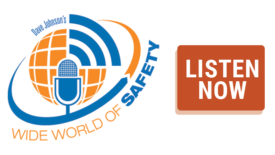Articles by Dave Johnson
That’s old baggage; time to take new approaches to today’s workforce
Read More
How many companies are psychologically safe?
Most of the attention goes to physical hazards
January 11, 2024
How safety pros consume information in 2023
A look at what different generations value when it comes to knowledge
November 16, 2023
Top leaders are investing in physical & mental wellness
Safety pros can take advantage of this new frontier
October 21, 2023
Evaluate a company’s health and safety commitment using ACT
Critical EHS issues include Automation, Culture and Training
October 3, 2023
Dave Johnson: What's Going On
You know your workers – push for their wellbeing
September 21, 2023
Get our new eMagazine delivered to your inbox every month.
Stay in the know on the latest safety trends.
SUBSCRIBE TODAYCopyright ©2024. All Rights Reserved BNP Media.
Design, CMS, Hosting & Web Development :: ePublishing










